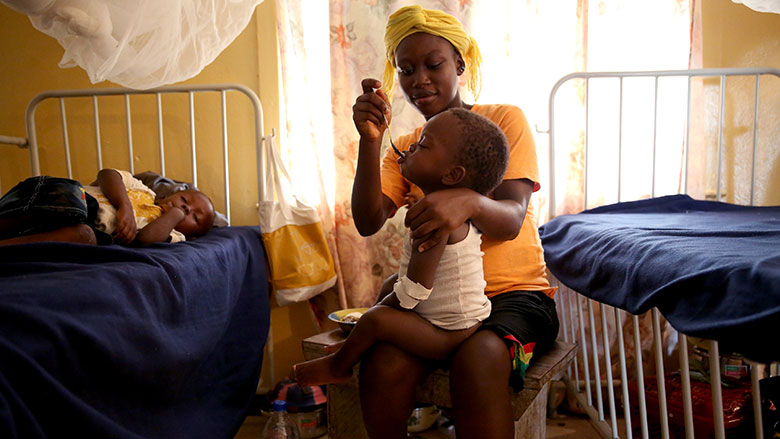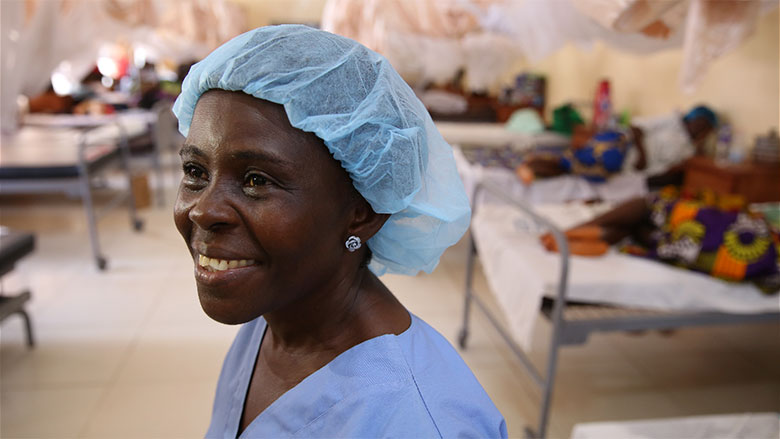Approach
- The World Bank (WB) is continuing to focus on three main fronts: contributing to the economic transformation of the country, by increasing access and connectivity, focusing on roads, energy and telecommunications in addition to agriculture and fisheries; supporting improved outcomes in education, health and social protection; and consolidating governance efforts to strengthen institutions that will transform the economy and society in order to benefit from increasing resources while at the same time, addressing historical drivers of conflict and fragility. Crosscutting themes include gender, capacity building and governance.
- To implement the National Vision, the government formulated a five-year medium term strategy, the Agenda for Transformation (AfT), which provides continuity with the unfinished agenda of the previous Poverty Reduction Strategy (PRS), especially on peace, security and the rule of law and addressing the stress factors that drove the country repeatedly to conflict.
- Building on previous successful efforts, the WB is focusing on a mix of budget support and investment lending to help Liberia put in place basic economic governance reforms, including public financial management, procurement reform, and civil service reform. The WB is also working with the government to ensure growth is accessible to all citizens, with interventions in smallholder agriculture, employment generation, vocational training, and skills building to allow citizens to take advantage of employment opportunities as economic growth accelerates.
Results
Infrastructure:
- Under the CPS FY13-17, rebuilding the country’s infrastructure has been progressing. The 110 meter-long new Caldwell Bridge under the Urban and Rural Infrastructure Rehabilitation Project (URIRP) was constructed to increase access to markets and to provide better health and education services in remote areas. This new bridge and the approaching access roads will provide primary access to White Plains Water Treatment Facility and Mt. Coffee Hydroelectric Generation Plant.
- Rehabilitation of the 68.61km Gbarnga - Ganta - Guinea Border Road under the Liberia Road Asset Management Project (LIBRAM) was completed. Travel time along this route has been reduced by 50%.
- With the support of the Liberia Electricity System Enhancement Project (LESEP) and the Global Partnership on Output-based Aid (GPOBA) program, the construction of a new 10MW HFO plant has been completed and 14,033 new connections to the electricity grid have been made and verified.
- As part of Lighting Lives in Liberia program, about 20,000 solar lighting devises have been commercially distributed benefitting over 100,000 people.
Health:
From the very early days of the Ebola epidemics outbreak in 2014, the WB has been providing fast and most flexible response and by far became the largest source of external funds for the Ebola fight in Liberia. Effectively, the total International Development Association (IDA) resource commitment during 2014-2016 comprised nearly double of the original IDA17 allocation:
- Daily and zero EVD reporting systematically implemented in all 15 counties;
- Training and technical supervision provided to all 15 counties;
- All 15 counties and 88 districts covered by social mobilization activities;
- 500 General Community Health Volunteers (gCHVs) trained and working as contact tracers and active case finders in 10 counties;
- Operating cost for Ebola Treatment Units (ETU), including catering service, fuels, medical/non-medical supplies;
- 13 incinerators procured and put in use;
- 40,507 hygiene kits; Medicines and supplies delivered to 270 health facilities in seven counties to serve 321,551 under-five children and 96,061 pregnant women;
- ~10,300 health workers benefit from hazard pay (risk allowance) each month since September 2014, with no report on health worker strikes;
- 4,264 metric tons of foods distributed to cover ~120 thousand individuals affected by EVD;
Support to building psychosocial health and resilience in Liberia was provided through the $2.75 million grant funded by the Japanese Social Development Fund (JSDF). Thanks to the grant, gCHVs have developed concrete skills in psychological first aid, anti-stigma, community detection of mental health issues and a referral pathway and 62 gCHVs from 52 facilities have been trained and are either living or working or both in highly affected communities.
Bank Group Contribution
As of June 15, 2015, the IDA portfolio includes 15 projects, of which four are regional, for a total commitment of $742.3 million. Infrastructure (roads, energy) and health (Ebola Emergency Response Project/Health Systems Strengthening) account for approximately 77% of the total commitment, followed by social sectors (13%), agriculture and environment (5%) and economic management (5%).
Partners
The CPS FY13-17 was developed and is being implemented in close coordination with development partners such as the African Development Bank (ADB), the European Union (EU), the United States Agency for International Development (USAID) and the Swedish International Development Cooperation Agency (Sida). Other donor partners are USAID/MCC, China, Germany, Japan, Sweden, Norway, the United Kingdom, Ireland and the United Nations.
The WB has been a major proponent of aid coordination through the Liberia Reconstruction Trust Fund (LRTF), a multi-donor trust fund for infrastructure, administered by the WB and supported by contributions from the European Union, and the governments of Great Britain, Sweden, Ireland, Norway and Germany. The WB has been active member and contributor to the donor groups in financial management, public sector reform, agriculture, social protection, energy and health.
World Bank Group (WBG) Ebola response brought together many development partners under the leadership of the government. This strong collaboration and coordination greatly contributed to containing the epidemic and subsequently providing the foundation for strengthening the health system of Liberia.
The International Finance Corporation (IFC) supports AfT by working to improve the investment climate, strengthen the domestic financial sector, support private participation in infrastructure, and invest in private sector led projects in agribusiness, mining, power and financial services. Major areas of investment to date include agribusiness (rubber and palm oil), and financial markets including trade lines, and Small and Medium Scale Enterprises through the West Africa Venture Fund.
Moving Forward
As Liberia moves from its post-Ebola era to a long-term development phase, the WB’s CPS FY13-17 supports the government’s Agenda for Transformation (AfT) to contribute to sustained growth, poverty reduction and shared prosperity, while exiting fragility and building resilience. Key pillars are: (i) Economic Transformation; (ii) Human Development; and (iii) Governances and Public Sector Institutions. In December 2014, the CPS program was refocused to support the government’s post-Ebola Economic Stabilization and Recovery Plan. The WB will continue its work to help Liberia deepen and sustain its core governance reform program, ensure increased employment opportunities for citizens, especially youth, improve access to basic infrastructure and basic service delivery.
Beneficiaries

